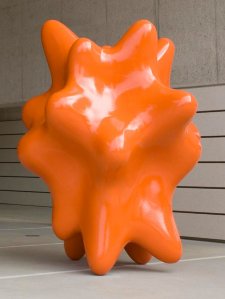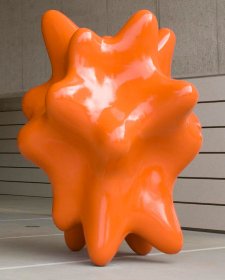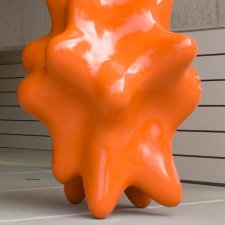James Angus, born in Perth, Western Australia, has consistently explored the complexities inherent in traditions of Western sculpture. The first museum exhibition of Angus's work at Sydney's Museum of Contemporary Art in 1992 surprised viewers with its resolute and conceptually rigorous interrogation of spatial dynamics, and its engagement with the processes of industrial production. In the late 1990s Angus produced a number of sculptural works that represented carefully chosen animals and objects. A life-sized yellow fibreglass rhinoceros, pink rubber giraffe, and painted bronze dodos evoked perceptual complexity and analysed assumptions of scale and form. The very specific nature of the subjects of Angus's sculptures reflected their rich cultural and semiotic capacities. In 1999 he made several sculptures of a basketball and soccer ball where the use of computer-assisted design techniques enabled the artist to apply physical forces theoretically in virtual space. A real basketball was scanned in 3D and reproduced inside the computer; a soccer ball was created mathematically using computer design. These simulations were then subjected to theoretical velocity and force, captured at the moment of impact with the earth after being dropped from the cruising altitude of a 747 jet airliner, and reproduced as sculptures cast in plaster and bronze.







